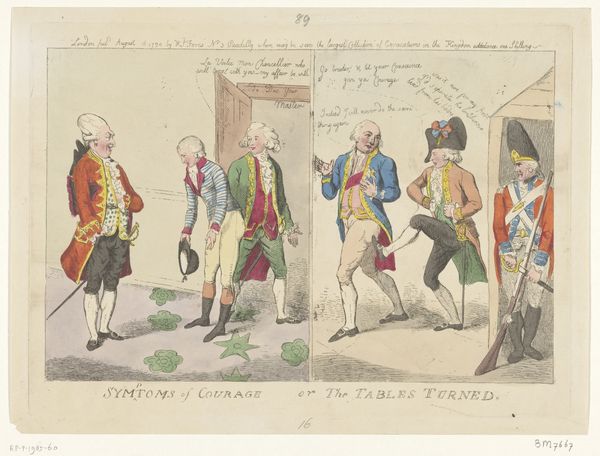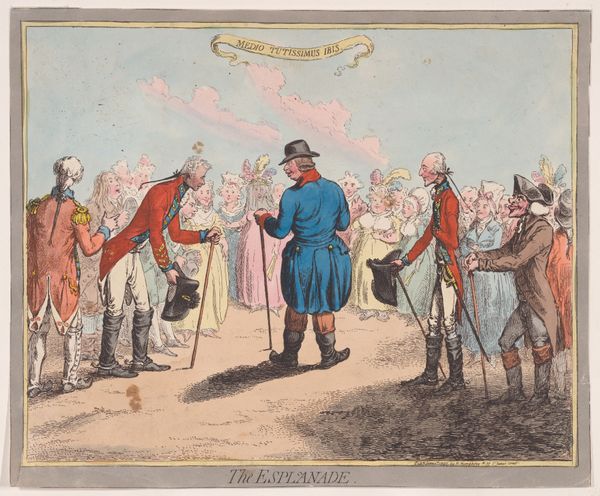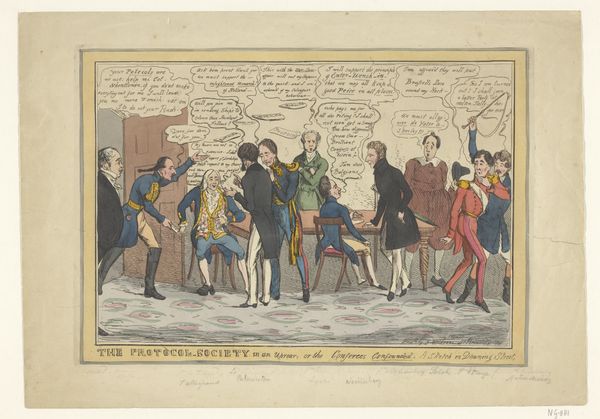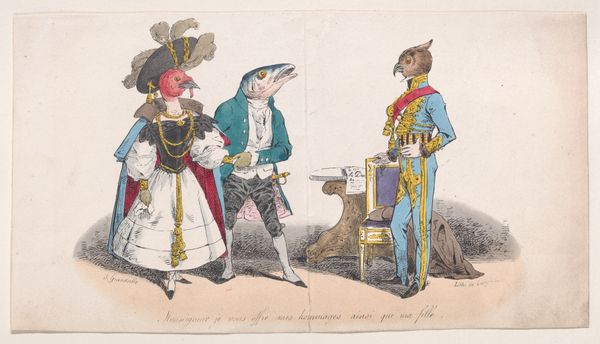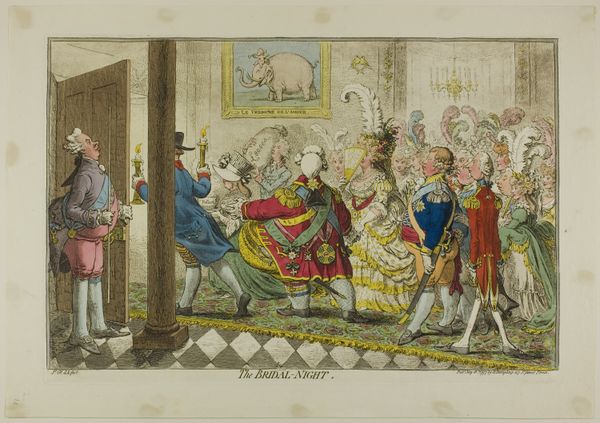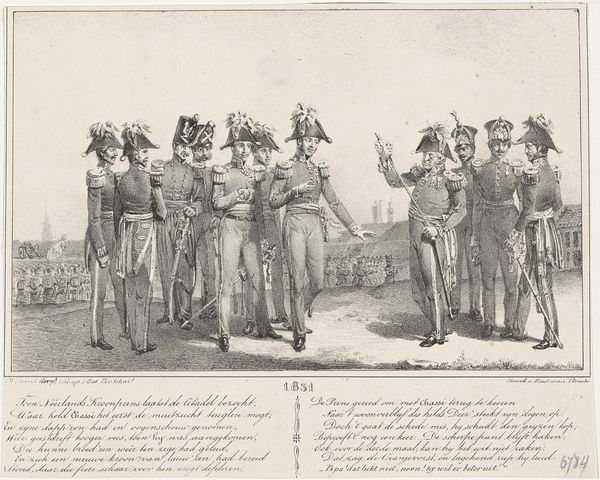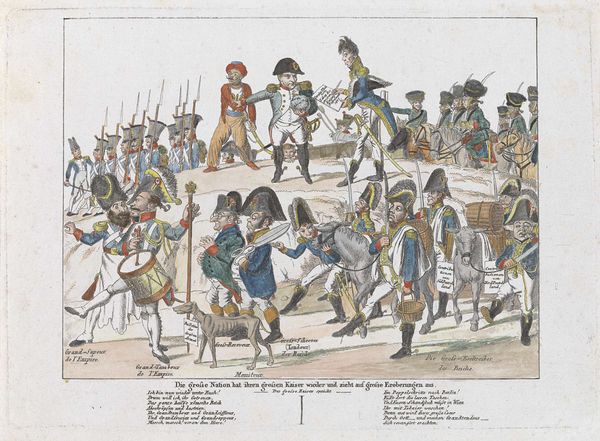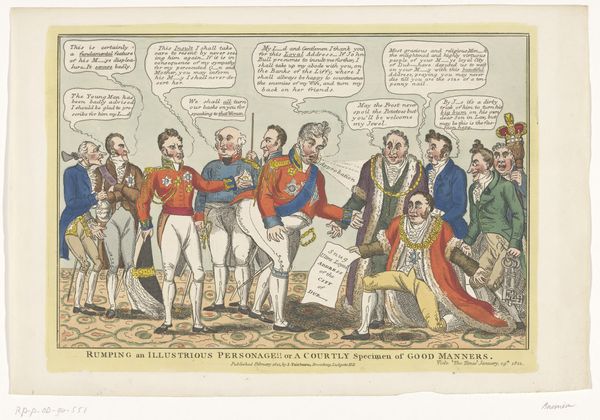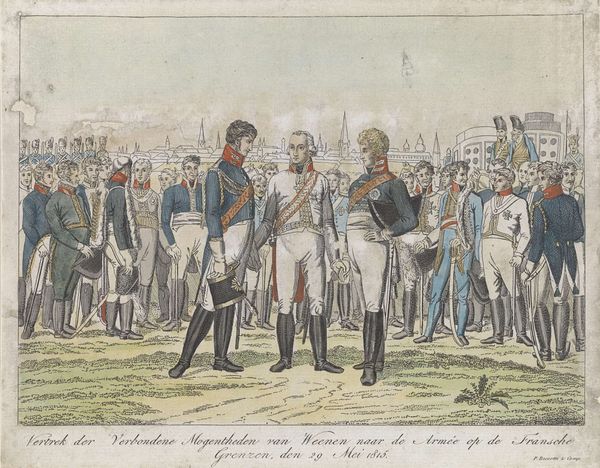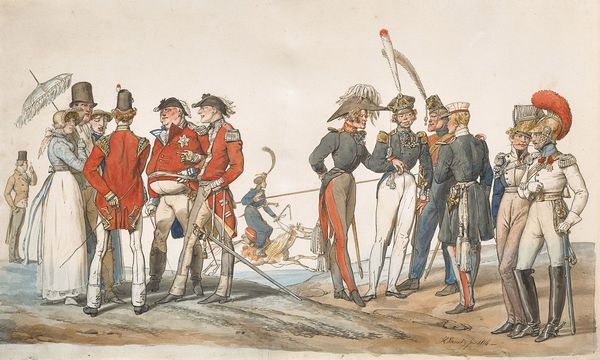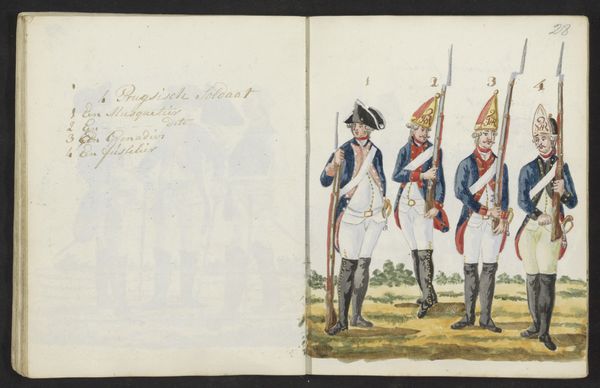
Washington Taking Leave of the Officers of His Army–at Francis's Tavern, Broad Street, New York, December 4th, 1783–"With a heart full of love and gratitude, I now take leave of you. I most devoutly wish that your latter days may be as prosperous and happy, as your former ones have been glorious and honorable." 1848
0:00
0:00
drawing, lithograph, print
#
portrait
#
drawing
#
lithograph
# print
#
group-portraits
#
romanticism
#
genre-painting
#
history-painting
#
academic-art
Dimensions: Image: 8 9/16 × 12 3/8 in. (21.7 × 31.5 cm) Sheet: 10 1/16 × 13 7/8 in. (25.6 × 35.2 cm)
Copyright: Public Domain
Curator: Well, if that isn't a tableau of bittersweet adieu! Looking at it, I'm struck by the solemn, heavy mood hanging in the air. The somber blues and muted tones seem to mirror the officers' resignation. Editor: Precisely. The piece is a lithograph created in 1848 by Nathaniel Currier, titled "Washington Taking Leave of the Officers of His Army." It's a historical genre painting, very much within the academic style, that commemorates Washington's farewell at Francis's Tavern in 1783. Notice how Currier meticulously composes the scene to highlight not just Washington, but the collective sense of loss and transition. Curator: Loss and transition—exactly! The way they're all gathered, like a huddle of stoic elegance, just amplifies the emotional gravity. Even the table, laden with what I presume is celebratory drink, seems unable to lighten the collective gloom. Almost like it's saying "Well, we're not in charge of emotions here, only drinks..." Editor: Yes, the table serves as an interesting compositional device, a symbolic altar where shared sacrifice and comradeship are being silently honored. The close-packed officers frame Washington at the center, a physical manifestation of their unity and his leadership. Observe, though, the range of facial expressions, which communicate various personal and individual interpretations of their departure from service. Curator: It is so potent. One can almost feel that hesitant stillness before something important—a monumental shift—unfolds. The scene is pregnant with the anticipation of ordinary lives resuming, doesn’t that feel almost like a challenge? Editor: Indeed. Furthermore, consider the material aspect of the lithograph itself. The graphic medium lends a certain accessibility, allowing Currier's historical narrative to reach a wider audience. Through lines, colors, and composition, it invites a thoughtful reconsideration of historical legacy. It prompts viewers to ask questions about leadership, sacrifice, and remembrance. Curator: Leaving us perhaps to also wonder what legacy we shall craft? All in all, it's not just an artwork—it's a mirror reflecting moments of goodbye that still resonate centuries later. Editor: Agreed, its enduring resonance hinges upon both aesthetic mastery and deeply evocative storytelling.
Comments
No comments
Be the first to comment and join the conversation on the ultimate creative platform.

